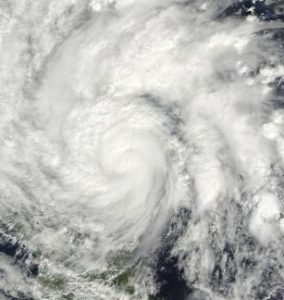Insurance coverage disputes often turn on the meaning of the specific words used in a policy. Norwegian Hull Club v. North Star Fishing Co., currently pending in the U.S. District Court for the Northern District of Florida, presents a twist—it turns on the meaning of a blank space.
Last month, U.S. District Judge Robert L. Hinkle ruled that neither the policyholder nor the insurer was entitled to summary judgment regarding the interpretation of a critical policy provision, reasoning that an empty field rendered the clause ambiguous. But as the case now proceeds to trial, the most interesting part of the district court’s opinion might be its own blank space: contra proferentem, the argument it doesn’t address.
 Policyholder Pulse
Policyholder Pulse



 Earlier in 2022,
Earlier in 2022,  As the number and severity of cyberattacks rise, the importance of insurance coverage to offset resultant loss becomes increasingly important. An opinion issued by the Ohio Court of Appeals is a happy reminder that there may be coverage for cyber-related loss even if you did not buy cyber-specific insurance and that policyholders should review their entire insurance portfolio when confronted by a cyber loss.
As the number and severity of cyberattacks rise, the importance of insurance coverage to offset resultant loss becomes increasingly important. An opinion issued by the Ohio Court of Appeals is a happy reminder that there may be coverage for cyber-related loss even if you did not buy cyber-specific insurance and that policyholders should review their entire insurance portfolio when confronted by a cyber loss. Early in 2021, we wrote about potential insurance implications that could arise from the then-new
Early in 2021, we wrote about potential insurance implications that could arise from the then-new  After hitting the shores of Louisiana with winds of up to
After hitting the shores of Louisiana with winds of up to  The legal cannabis industry in the U.S. is growing at an unprecedented rate and is projected to reach
The legal cannabis industry in the U.S. is growing at an unprecedented rate and is projected to reach  The United States
The United States  One word that aptly describes the devastation that is 2020 is “relentless.” The COVID-19 pandemic has caused both personal and economic suffering throughout the world for over six months. Against the backdrop of the already devastating effects of COVID-19, several regions in the United States have recently experienced powerful storms and historically large wildfires. The wildfires in the western United States and Canada have been especially catastrophic this year—burning millions of acres, forcing evacuations, damaging air quality, and creating blankets of smoke extending over much of the country. The fires have destroyed homes and businesses and will lead to hundreds or thousands of insurance claims under homeowners, commercial property, and business interruption policies.
One word that aptly describes the devastation that is 2020 is “relentless.” The COVID-19 pandemic has caused both personal and economic suffering throughout the world for over six months. Against the backdrop of the already devastating effects of COVID-19, several regions in the United States have recently experienced powerful storms and historically large wildfires. The wildfires in the western United States and Canada have been especially catastrophic this year—burning millions of acres, forcing evacuations, damaging air quality, and creating blankets of smoke extending over much of the country. The fires have destroyed homes and businesses and will lead to hundreds or thousands of insurance claims under homeowners, commercial property, and business interruption policies. As businesses around the world continue to assess when and how to reopen their offices, the marketplace has become saturated with innovative “back to office” products and services. Whether a business chooses to invest in the latest body temperature scanner (such as
As businesses around the world continue to assess when and how to reopen their offices, the marketplace has become saturated with innovative “back to office” products and services. Whether a business chooses to invest in the latest body temperature scanner (such as  Late in June, the U.S. Supreme Court issued a decision in
Late in June, the U.S. Supreme Court issued a decision in